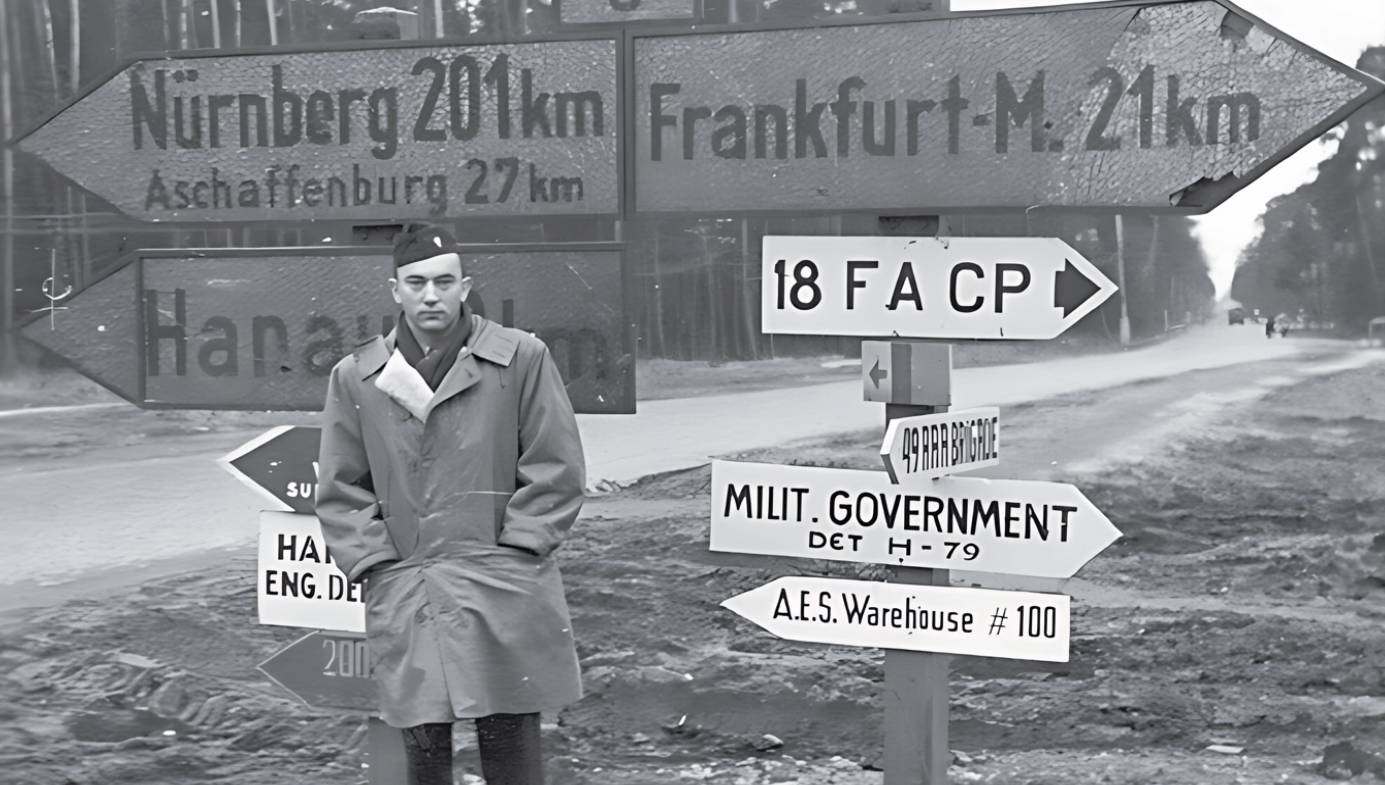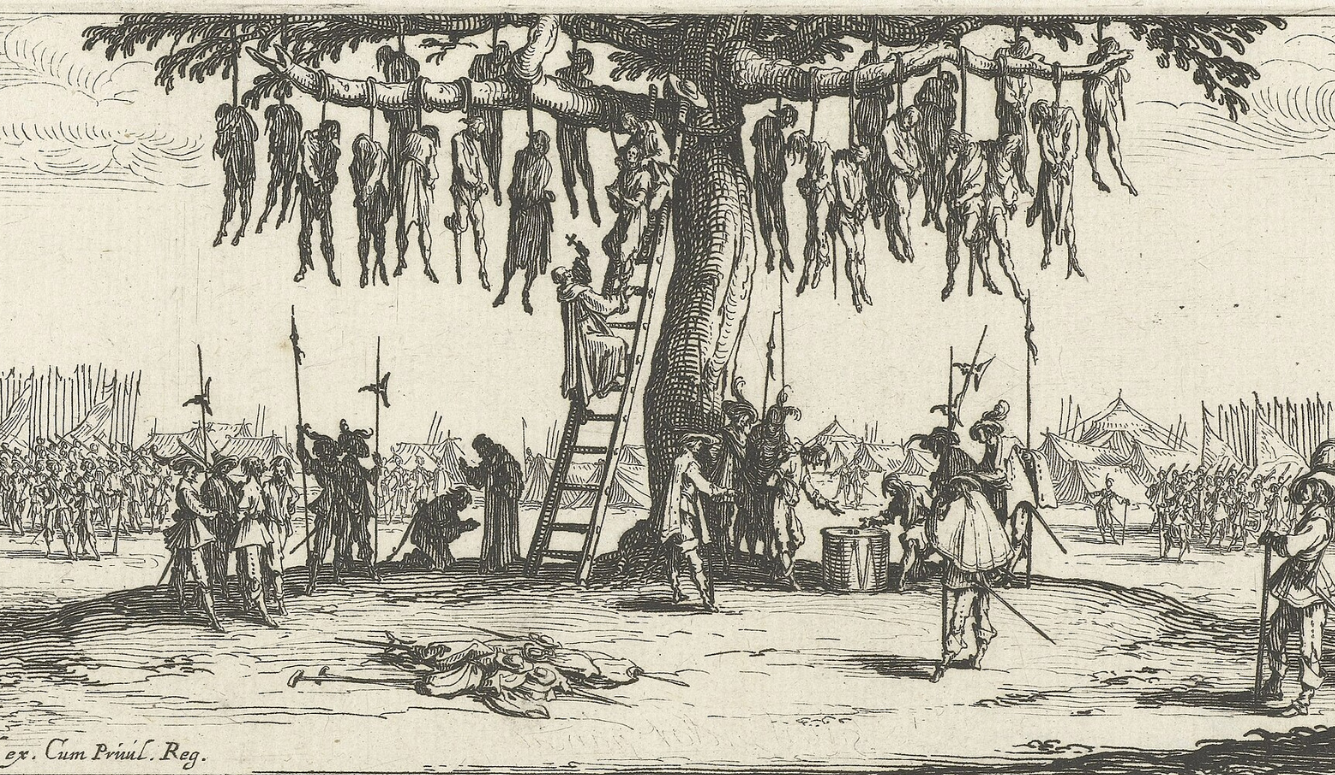fascism
Were the Nazis Left-Wing?
The parallels between Nazism and communism complicate the standard left–right divide.

Every so often, some prominent figure on the political Right will assert that the Nazis were left-wing, prompting predictable outrage from the Left. A recent example comes from Alice Weidel, the Alternative for Germany (AfD) party’s candidate for chancellor in the 2025 general elections. In a conversation with Elon Musk, she described Adolf Hitler as a “communist, socialist guy.” But is there any validity to this claim?
First, we shouldn’t place too much weight on the name. A party called the “National Socialist German Workers’ Party” could well have been no more socialist than the Democratic People’s Republic of (North) Korea is democratic. Similarly, the fact that Benito Mussolini, a major influence on Hitler, began as a socialist before embracing fascism doesn’t provide sufficient evidence of inherent leftism. People can, after all, change their minds. Likewise, left-wing intellectual George Bernard Shaw’s admiration for fascism may simply have been a lapse in judgement. And while today’s progressives often fixate on race or even engage in antisemitism—paralleling aspects of Nazism—this does not in itself prove that Nazism originated in leftist thought.
Hitler himself, however, did consider Nazism a form of socialism. In a 1923 interview, he stated,
Socialism is an ancient Aryan, Germanic institution. Our German ancestors held certain lands in common. They cultivated the idea of the common weal. Marxism has no right to disguise itself as socialism. We are not internationalists. Our socialism is national. We demand the fulfillment of the just claims of the productive classes by the state on the basis of race solidarity. To us, state and race are one.
In other words, Hitler considered Marxian communism a socialist heresy. Yet his description of National Socialism as “socialism in evolution, a socialism in everlasting change” echoes the Marxist view of history as a process of dialectical change.
Although Hitler’s version of socialism did not, as he put it, “repudiate private property,” it shared with communism a strong emphasis on collectivism over individualism, with the state not only enforcing the supposed interests of the collective but claiming identity with it. In this regard, the two movements were less ideological enemies than competitors—with liberal democracy as their common enemy. To quote F.A. Hayek in The Road to Serfdom, “The communists and Nazis clashed more frequently with each other than with other parties simply because they competed for the same type of mind and reserved for each other the hatred of the heretic.”
This also helps explain the strikingly similar iconographies that emerged in the totalitarian regimes the Nazis and communists went on to establish. Both these popular movements conceived of history as being propelled by “revolutionary struggle” and sought to remake man in the image of their respective ideologies. Hitler commented, “There is more that unites us with than divides us from bolshevism ... above all the genuine revolutionary mentality. I was always aware of this and I have given the order that one should admit former communists to the party immediately.” According to Hitler, “all these new means of the political struggle used by us are Marxist in origin.”
And the parallels run deeper than means and mentality alone. In his 1932 pamphlet The Nazi-Sozi: Questions and Answers for National Socialists, future Nazi propaganda minister Joseph Goebbels remarks, “Where would we take the moral right from to fight the idea of the proletarian struggle between the classes, if the bourgeois class-state were not first destroyed and replaced by a new Socialist structure of the German community?” Steeped in leftist rhetoric, Goebbels’s pamphlet contains an entire chapter dedicated to “class struggle” and explicitly links antisemitism with socialism: “If we were merely antisemites, this would be an outdated cause. But we are also socialists. … Socialism—meaning the liberation of the German proletariat—can only be achieved in opposition to the Jews.”

In his 1974 book Leftism: From de Sade and Marx to Hitler and Marcuse, Erik von Kuehnelt-Leddihn writes, “The first systematic leftist and nationalistic opposition against Moscow-centered communism came from Italy. It was fascism; it had clearly socialistic origins.” He elaborates: “In the earlier 1890s fasci (‘bundles,’ leagues) of workers, so-called fasci dei lavoratori created grave disturbances .... They were imbued with romantic socialist ideas.” Mussolini, who would later become Duce del Fascismo, was a fervent socialist with strong nationalist leanings. “In 1919 Mussolini had still praised the Communist seizure of the factories in Dalmine and in 1921 he had offered the Socialist party (PSI) cooperation in an antimonarchical and anticapitalist revolution.” Hitler would later implement Mussolini’s credo: “Everything within the State; nothing outside the State; nothing against the State.”
“At heart Mussolini was always a Socialist,” argues von Kuehnelt-Leddihn, while Hitler “had never formally belonged to the Socialist party, although he had drunk from almost the same ideological sources.” Von Kuehnelt-Leddihn identifies “a distinctly leftist pattern which generally can clearly be traced back to the French Revolution.” Indeed, Hitler described his Nazi revolution as “the exact counterpart of the French Revolution,” portraying himself not only as “the conqueror but also the executor of Marxism—of that part that is essential and justified, stripped of its Jewish-Talmudic dogma.”
For a more direct influence on Hitler, we can look to Rudolf Jung. Hitler neither invented National Socialism nor formulated its programme. Jung, who coined the Nazi slogan Gemeinnutz geht vor Eigennutz (“The common good comes before self-interest”), published his National Socialism: An Introduction to its Foundations and its Goals in 1919—several years before Hitler’s Mein Kampf. By then, the broader National Socialist movement had already been in existence for some time.
Jung writes, “The unedifying conditions in the Pan-German movement, which was originally conceived of as a grass-roots movement, inevitably led to the evolution of a unique political and trade-unionist tendency.” The National Socialists, he explains, demand “a partial socialization in the form of economic nationalization and provincialization. One would therefore be perfectly correct in regarding this programme as a socialist one.” The party, Jung continues, “represents the interests of all honest, productive labor in general [and] combats all reactionary tendencies, all clerical, noble, and capitalist privileges, and every racially-foreign influence.” However, “above all does it combat [sic] the overwhelming power of the Jewish commercial spirit in all areas of public life.”
Economically, the Nazi regime was firmly on the Left—and not just because they viewed the accumulation of capital in the hands of “unproductive” capitalists—especially Jews—as inherently exploitative, since they failed to understand the crucial economic role of middlemen. Theirs was a centrally planned economy with heavy regulation. Corporations were dictated to as to what to manufacture and in what quantities, told at what prices their products could be sold, to whom they could sell them, and whom they could hire. Following the example of Stalin’s Five-Year Plan, Hitler instituted the Third Reich’s Four-Year Plan and put Reichsmarschall Hermann Göring in charge. This gave Göring complete control over the economy, including the private sector.
In his 1939 book The Vampire Economy: Doing Business Under Fascism, Günter Reimann offers a compelling account of the Nazi economic system. To illustrate the climate in Germany at the time, Reimann cites a letter from a German businessman, written “free from censorship” during a visit to a neighbouring country: “These Nazi radicals think of nothing except ‘distributing the wealth.’ Some businessmen have started studying Marxist theories, so that they will have a better understanding of the present economic system.”
Although the Nazis never formally abolished private property, the notion of “property rights” became effectively meaningless, “since under fascism there is no longer an independent judiciary that protects the property rights of private citizens against the State.” Reimann further observes, “The government of a totalitarian State would not be ‘authoritarian’ if the courts functioned independently, as they do under liberal capitalism.” Even the Krupp concern—the largest company in Europe at the start of the twentieth century and Germany’s foremost weapons manufacturer during both world wars—was not immune. As Reimann notes, “not even from Herr Krupp would Goering take ‘no’ for an answer.”
This hubris resulted in large-scale mismanagement. Scarce raw materials were allocated by supervisory boards on the basis of the Four-Year Plan, rather than being distributed according to productive capacity, consumption, or past production. As Reimann points out, “The supervisory boards [had] neither the knowledge nor the means to adjust supply and demand.” And even though “effective price restrictions are impossible without complete control over supply and demand,” the Nazis attempted exactly that. A “Price Commissar” set the prices of goods, stripping the market of its most crucial means of communication and thereby rendering it highly inefficient.
Reimann provides anecdotes of companies and ordinary people bypassing these regulations through “private initiative.” For example, since tires were scarce due to rubber shortages, firms resorted to purchasing entire new trucks just to obtain the tires. The tires were then removed, and the trucks—now without tires—were sold as scrap iron. To skirt economically unfeasible price caps on livestock, some farmers bundled non-regulated items with their products and negotiated the price accordingly. One farmer, for instance, sold his dog with every pig. After the sale, the customer would release the dog, which always found its way back home. Naturally, none of this was legal.
The expropriation of Jewish property and, later, the exploitation of abundant slave labour helped mitigate economic decline and fuelled the Nazi war machine. Krupp and numerous other German businesses, including Volkswagen, benefited from forced and slave labour during World War II and actively participated in the Holocaust. This complicity further interwove private industry with the Nazi state apparatus.

If corporations failed to follow party leaders’ directives, the state would intervene. For example, when party leaders “demanded that new iron and steel mills be erected in Austria,” Reimann writes, the steel association “hesitated to expand its Austrian subsidiary,” deeming the expansion economically unfeasible. In response, “the State, through the Hermann Goering Reich Iron Works, simply assumed control of Alpine Montanwerke and proceeded to establish a new production center in Linz on the Danube.”
If libertarianism is considered right-wing, then the Nazis were the opposite. Von Kuehnelt-Leddihn aptly characterises Hitler as “a man with a genuinely leftist turn of mind, an identitarian, a leader, not a ruler, a personifier of the masses … who wanted to see Germany in complete monotony.” This totalitarian vision, of course, did not stop at the eradication of political and cultural pluralism: “He wanted to make the Germans more uniform, even physically, by planned breeding and the extermination, sterilization, or deportation of those who deviated from the norm.”
However, it is inappropriate to suggest that Nazism was “left-wing” in the way we understand that term today. Since the 1960s, the Left has been driven more by culture war than by class struggles, having shifted its focus from economic to social issues, such as race and gender equality. While it is somewhat ironic that those who are most fixated on racial identity today often consider themselves progressives, unlike these modern-day leftists, the Nazis were deeply reactionary in their social and cultural views. They condemned modern art as degenerate and sent sexual minorities to death camps. No matter how you frame it, the problem with Nazism was not that it was too liberal.
Groups like the AfD in Germany have sought to frame Nazism as left-wing based solely on economic policy—in an effort to deflect attention from their own ideological ties to Nazi thought. Weidel, who is married to a Sri Lankan woman, is, of course, not a Nazi, nor can the AfD platform be accurately described as national-socialist. Founded in 2013 with a liberal-conservative orientation, the party has gradually shifted rightwards as its ethnonationalist wing gained influence through the migration debate, sidelining moderate voices like party founder Bernd Lucke.
The party subsequently failed to rein in radicals like Björn Höcke, whose Thuringia chapter has since been officially classified as “right-wing extremist” by the German Federal Office for the Protection of the Constitution. Even Matthias Helferich, who once described himself as “the friendly face of National Socialism,” remains a party member and candidate. Former party spokesman Alexander Gauland notoriously trivialised the Nazi war and genocide as “just a speck of bird poop” in German history while simultaneously praising “the achievements of German soldiers in both world wars.” Clearly, Germany’s Far Right struggles not only to credibly distance itself from Nazism but to fully acknowledge German historical guilt.
Yet, it’s historically accurate to place fascism and National Socialism within the broader leftist tradition. The Left has too easily absolved itself of responsibility by simply labelling these movements “right-wing” and grouping them with conservatives and economic liberals. However, overly simplistic interpretations of Nazism as a left-wing movement risk providing cover for far-right groups and movements that downplay the Holocaust or promote bigoted and anti-democratic views, allowing them to dismiss any parallels to the Nazis. Perhaps the best approach here is to move beyond the idea that political ideologies can be neatly arrayed on a line from left to right. Instead, we should judge them by their actual content.






